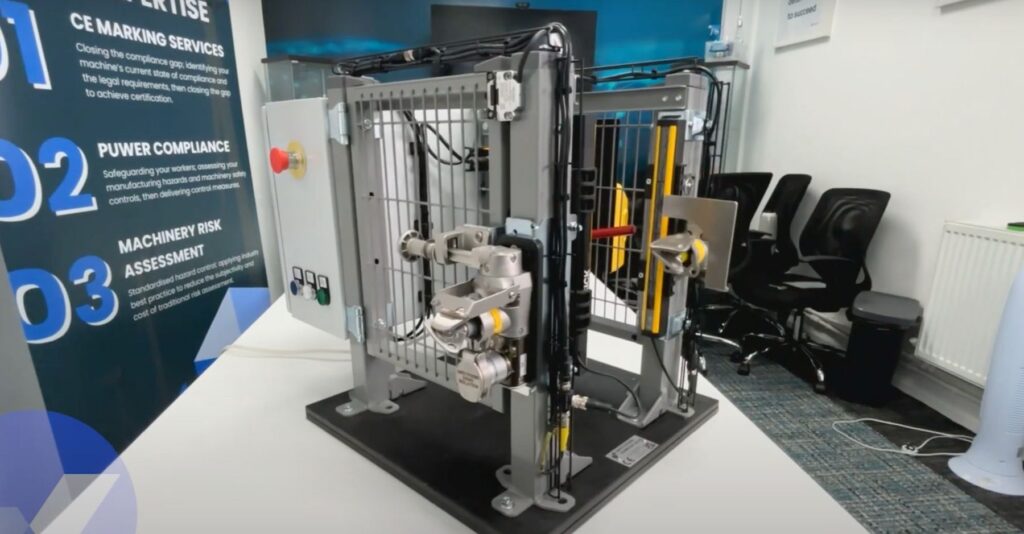When working with machinery that includes electrical parts, knowing about the Electromagnetic Compatibility (EMC) Directive is crucial. This directive sets rules on how equipment should be designed and made to handle electromagnetic disturbances, both in what it emits and what it can withstand.
However, there are many misunderstandings about what the EMC Directive actually requires, especially regarding testing. This article explains these requirements and shows how businesses can comply without extra costs.
What is the EMC Directive?
The EMC Directive applies to any electrical or electronic equipment that might emit or be affected by electromagnetic disturbances. If your machinery has electrical parts, it will likely create some electromagnetic interference (EMI) or be vulnerable to electrical noise from other machines. But many believe the EMC Directive always requires testing for all machinery. This is not true; testing is not always mandatory.
Testing is Not Always Required
The EMC Directive does not demand testing for every machine. It does mention conformity assessment bodies, which are groups that do testing, certification, and inspection, but it does not require testing for all equipment.
The essential rules of the EMC Directive, found in Annex 1, state that equipment must be designed and made to meet current standards to ensure:
- Control of Emissions: The electromagnetic disturbance created should not be so high that it stops other equipment from working properly.
- Resistance to Disturbance: The equipment should work correctly even when exposed to normal levels of electromagnetic interference.
For fixed installations, the EMC Directive recognises that standard testing may not always work. Large machines, for example, may not fit in a standard test area, or the environment may be too noisy to get accurate results. In these cases, the directive allows for other methods to show compliance, like an electromagnetic compatibility assessment, instead of strict testing.
When Should Testing be Done?
You should test if you have new or unique equipment setups that could emit significant electromagnetic interference. For instance, if the equipment has never been tested or could create high levels of EMI, then testing might be needed. But if your equipment or its parts are already CE-marked and meet the EMC Directive, you can use another approach: an electromagnetic compatibility assessment.
What is an Electromagnetic Compatibility Assessment?
An electromagnetic compatibility assessment is a review done on paper, without any physical testing, which can save money. According to Annex 2, Module A of the EMC Directive, the manufacturer must carry out this assessment to check that the equipment meets the basic requirements set out in Annex 1.
This assessment looks at all the normal ways the equipment will operate and its different setups. The goal is to ensure that the equipment meets all necessary requirements in every way it is meant to be used. The manufacturer must document this assessment, providing details to prove the equipment complies with the EMC Directive.
Steps to Ensure Compliance
To comply with the EMC Directive, manufacturers must create detailed technical documents. These documents should show how the equipment meets the directive’s rules, including an analysis and risk assessment. Here’s a straightforward way to do this:
- List the Components: Break down the machinery into its parts and find the right standards that apply to each one.
- Check Compliance: Make sure these parts have been tested and meet the EMC standards. If they do, they can be considered compliant.
- Review the Whole Assembly: If the machine is made of compliant parts and does not have any new electrical systems that could cause high EMI, the entire machine can be seen as compliant.
Equipment Not Covered by the EMC Directive
Some equipment does not fall under the EMC Directive. For example, equipment that cannot generate or contribute to electromagnetic emissions that could interfere with other devices is excluded. This includes:
- Motors without electronic circuits.
- Devices with only resistive loads and no automatic switches (e.g., basic heaters without controls, thermostats, or fans).
- Electromagnetic relays without electronic parts.
- Electromagnetic locks without electronic parts.
If your machinery contains parts like these, you can argue that the equipment is “inherently benign” and is not covered by the EMC Directive.
Practical Examples of Exclusions
Suppose you build machinery with several CE-marked parts and add an item that falls into the categories listed above. In this case, you could argue that the equipment does not need EMC testing. You could state in your assessment that your machinery meets the directive without additional testing.
For instance, if your machinery has a motor without electronic circuits or a simple resistive heating element with no automatic switches, these parts would not create significant electromagnetic interference. Thus, no extra EMC testing would be needed, and your machinery could be considered compliant with the EMC Directive based on the assessment of the parts.
Conclusion: Making EMC Compliance Easier
Knowing the EMC Directive and its requirements is key to keeping your machinery safe and compliant with the rules. While the directive has strict rules on controlling emissions and ensuring resistance to electromagnetic interference, it does not always mean expensive testing. Often, businesses can use an electromagnetic compatibility assessment to show they comply, especially when using CE-marked or inherently benign equipment.
By carefully reviewing your equipment’s parts and following the EMC Directive’s guidelines, you can meet the requirements more easily and affordably.




